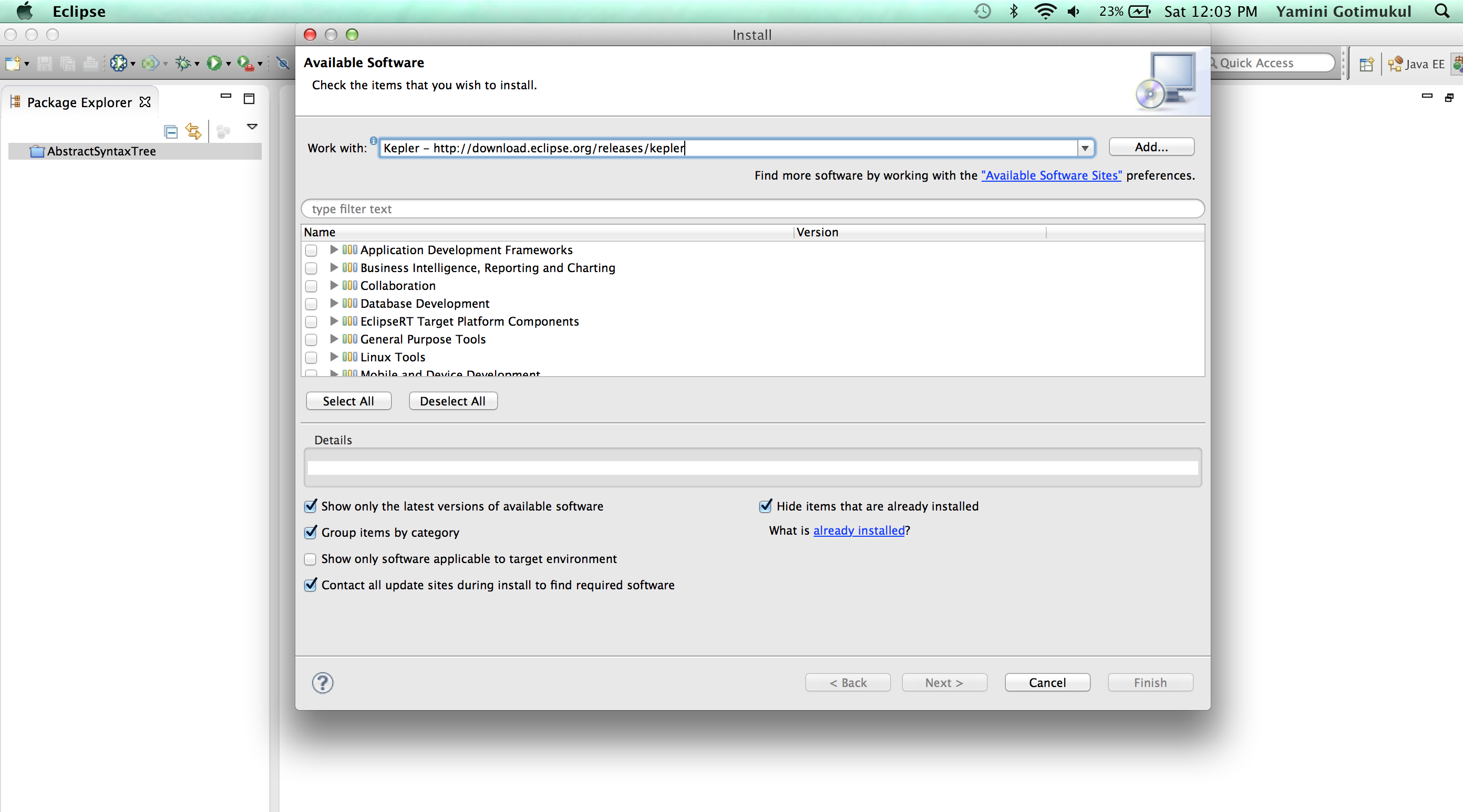

- Eclipse how to install windowbuilder archive#
- Eclipse how to install windowbuilder software#
- Eclipse how to install windowbuilder code#
- Eclipse how to install windowbuilder license#
Click Archive again, select the directory where the plug-in is located, and then:Ĭlick Ok, the next steps are not difficult, just click the mouse.
Eclipse how to install windowbuilder software#
click Help in Eclipse, click Install New Software again, and it will appear:įill in the name of the plug-in in the Name column, such as WindowBuilder. After the download is successful, put it in your ideal directory (usually in the same directory as Eclipse).Ģ. Because I am using Indigo (3.7), I downloaded the corresponding WindowBuilder plug-in. Instructions and system requirements for installing WindowBuilder can be found here. If you have not, Eclipse can be downloaded from. These instructions assume that you have already installed some flavor of Eclipse. Use wizards, editors and intelligent layout assist to automatically generate clean Java code, with the visual design and source always in sync. Click on the first link and come to:Ĭlick the Download with the download icon,Īll downloads are provided under the terms and conditions of the Eclipse Foundation Software User Agreementunless otherwise specified.ĭevelop Java graphical user interfaces in minutes for Swing, SWT, RCP and XWT with WindowBuilder Pro's WYSIWYG, drag-and-drop interface. This is a screenshot of an application I wrote as part of my studies.In the above figure, the first result is the offline installation method, which is to be said later, as for the second search result is the online installation method. Here’s a more thorough example of what WindowBuilder can do for you.

To do this simply, right-click on a component, a JButton in this case, and select an event handler. So for instance, if you want to add a record to a database by clicking on an Add button, you will add the required logic to an event handler.
Eclipse how to install windowbuilder code#
Although all the required code is automatically added for you, you still need to add logic to it to make it all work.

Once you’re there, you can change the layout, add containers, event handlers and what not. To add elements or components to the JFrame, switch to the Design page by clicking the tab at the bottom of the code page. If you run it, an empty JFrame window is displayed. The wizard creates all the required base code for you. Type in a name for the new Swing application and click Finish. Scrolling down to the end of the Wizards list, you should see an entry named WindowBuilder.Īs an example, I want to create an application that uses Swing so I simply expand Swing Designer and select Application Window from the list of available options. From the default package, select Other from the New menu or simply press CTRL-n. To test WindowsBuilder, create or open an existing Project.
Eclipse how to install windowbuilder license#
I opted to install all the items listed but you can always pick and choose what to install.Īccept the license agreement and hit Finish.Īfter the installation completes, you will be asked to restart Eclipse. Review the items that will be installed and hit Next. Type in the Work With field, check the box next to WindowBuilder and hit the Next button. The procedure outlined should however work on older and later releases of Eclipse.įrom the Help menu, select Install New Software … I currently have Eclipse Neon.3 Release 4.6.3 installed on my home PC.

While reading for the final year of my degree, a year or so ago, I came across Window Builder which, in short, takes the pain out of building a graphical interface for Java applications. If you’re an amateur Java developer, like I am, you probably know that creating the simplest of GUI driven applications can be challenging.


 0 kommentar(er)
0 kommentar(er)
